Custom Form Design¶
Introduction¶
The purpose of this manual is to explain how to design custom forms to replace the standard forms that Qflow Task provides. The concept of a custom form is explained in the Qflow Design manual. It also explains how, once a custom form is ready, you must proceed to associate it with a template or a step in a template. This manual is only concerned with explaining how to build a custom form.
Readers of this manual should be familiar with the most important aspects of Qflow and the processes’ design. In addition, they should have ASP.NET MVC programming knowledge, which is the technology with which Qflow Task is built.
There are two ways to build custom forms for Qflow:
Custom view: it is the simplest way, and it consists of designing an HTML page to replace the standard form, thus providing a different appearance.
Custom area: an area that will contain the controller and the views of a flow or a set of related flows will be defined. The area contains views for all forms in these flows. Since the controller is programmed, this option involves more work, but also more customization and flexibility.
Custom view¶
Building a custom view consists of defining a view that uses a model that is provided by Qflow components. Which model is used depends on the type of form being built. For flow, flow edit and flow start forms, the Qflow.Web.Mvc.Models.FlowModel model is used, which represents a flow. For answer forms (tasks, questions) the Qflow.Web.Mvc.Models.TaskModel model is used, which represents a task.
These models contain the application data, roles, attachments, comments and flow data (name, description, template, etc).
Form type |
Model |
|---|---|
Start form |
Qflow.Web.Mvc.Models.FlowModel |
Answer form (task, question) |
Qflow.Web.Mvc.Models.TaskModel |
Flow form |
Qflow.Web.Mvc.Models.FlowModel |
Flow edit form |
Qflow.Web.Mvc.ModelsFlowModel |
Qflow also provides two layouts to use in custom views. These layouts include the JavaScript code necessary for the forms to function properly. It is recommended not to modify them. The available layouts, which can be found on Qflow Task, are:
~/Views/Shared/_CustomFormsLayout.cshtml: it includes the lateral menu and the header of Qflow Task.
~/Views/Shared/_CustomFormsEmptyLayout.cshtml: it does not include the lateral menu nor the header of Qflow Task.
Custom form design¶
The custom form is a cshtml file, as is usual for ASP.NET MVC views. To include application data, roles, and system data such as the name of the flow in the form, a set of helpers available through Qflow is used. These helpers extend the functionality of the ASP.NET MVC library. The form must contain an element of type form with the id ‘submitForm’. Within this element, the form must be defined, using the helpers. A reference of these helpers can be found in this manual, at Helpers references. Outside this element, the helpers that allow the flow attachments to be included in the form must be placed.
Access to elements of the client-side flow¶
Qflow also provides a set of JavaScript functions to access data from the client-side flow. These functions are available through the Host object, which is accessible from JavaScript code. See JavaScript library reference for details on the available functions.
Publishing the custom form¶
Once the form is ready, it must be copied to the web server that hosts Qflow Task. Inside the folder that contains the site, there is a folder called Areas\CustomForm\Views\Flow.
For example, if the site is hosted in C:\inetpub\wwwroot\Qflow\, the form file must be copied into C:\inetpub\wwwroot\Qflow\Areas\CustomForms\Views\Flow.
Do not forget that if the form uses other files, you should also copy them where appropriate.
You must also specify the form in Qflow Design, and associate it with the element to which it corresponds (the step to which it corresponds, if it is a response form). This is described in Associate the forms with the template.
Custom area¶
In the case of a custom area, in addition to the views, the controller must be programmed. For this it is recommended to create an ASP.NET MVC project in Visual Studio.
The steps to create an area are as follows (details below)
Create an ASP.NET MVC project in Visual Studio. The project name must contain the text “Custom”, for example SampleCustomForms.
Add references to the Qflow components necessary to build the forms (see References).
Register the area (see Register the area).
Program one or more controllers, with the required actions (see Controllers).
Create a view per custom form. Views are built in the same way as a common custom view (see Custom form design)
Modify _ViewStart.cshtml to consider the two types of layout (see Modify _ViewStart.cshtml).
Compile the project and publish the files on Qflow Task (see Build the files and publish them on Qflow Task).
Associate the area with the version of the template for which it was built.
References¶
After the project is created, add the following references:
Qflow.Web.Mvc.Site.dll
Qflow.Web.Mvc.dll
Qframework.Web.Mvc.dll
Qframework.Common.dll
These files can be found on Qflow Task. In general, it is recommended to have Qflow Task installed on the server where the forms are developed, to facilitate testing.
Register the area¶
To register the area, a class must be built. For example, if you are creating the forms for the “Customer Request” template, you can create the class “CustomerRequestAreaRegistration”. This must be a class derived from the CustomFormsAreaRegistration class. When specifying custom forms in Qflow Design, you must specify the name of the area, which is the one defined in this class, in the AreaName property.
using System.Web.Mvc;
using Qflow.Web.Mvc.Site.Areas.CustomForms;
namespace SampleCustomForm
{
public class SampleCustomFormAreaRegistration : CustomFormsAreaRegistration
{
public override string AreaName
{
get { return "SampleCustomForm"; }
}
public override void RegisterArea(AreaRegistrationContext context)
{
RegisterRoutes(context);
}
private void RegisterRoutes(AreaRegistrationContext context)
{
context.MapRoute(
"SampleCustomForm",
"SampleCustomForm/{controller}/{action}/{id}",
new { action = "Index", id = UrlParameter.Optional }
);
}
}
}
Controllers¶
The actions that must be present in the controllers depend on which forms you want to customize. All forms must inherit from FlowBaseController, which can be found in Qflow.Web.Mvc.Site. There are four possible types of forms:
Start flow form
Flow form
Flow edit form
Response form (task, question)
In general, each form that you want to customize requires at least one action to be implemented: the one returned by the view that represents the form. The forms from which data can be modified in Qflow also require an additional action, which is the one that is executed when the user clicks on the button that triggers the modification of the data (for example, when they click on the button that starts a flow or when they click the button that responds to a task). The start form also has an additional action for the view that is displayed when clicking on the start step of a flow that has already been started. All the actions corresponding to the same form have the same name: their signatures should only differ in their parameters.
The following sections explain, for each type of form, what actions should be added to the controllers, and an example of each action is given.
Start flow form¶
A start custom form requires three actions. Note that they all have the same name, but different parameters.
Show start form: It is executed when a user clicks on a template to start a flow.
[HttpGet] [RequireRequestValue("templateId")] public ActionResult StartTutorial(Guid templateId, Guid? versionId) { FlowModel model = GetNewFlow(templateId, versionId); return View(model); }
Start flow: It is executed when a user clicks the button that starts the flow.
[HttpPost] [ValidateInput(false)] //Needed for rich text box public ActionResult StartTutorial(Guid templateId, [ModelBinder(typeof(FlowModelBinder))] FlowModel flow) { try { SimpleFlowModel simpleFlowModel = StartFlow(flow); TempData["TypeMsg"] = "success"; TempData["Msg"] = "Flow started successfully"; return Redirect(Url.Action("Display", new { area = "", flowId = simpleFlowModel.FlowId })); } catch (Exception ex) { TempData["TypeMsg"] = "error"; TempData["Msg"] = ex.Message; //TODO: correct message and view return View(flow); } }
Show the start step form: It is executed when, with the flow already started, a user clicks on the start step to see the data for it.
[HttpGet] [RequireRequestValue("flowId")] public ActionResult StartTutorial(Guid flowId) { FlowModel model = GetStartedFlow(flowId); return View(model); }
Flow form¶
A flow form requires only one action, which returns the view that contains the form with a model that contains the flow data.
[HttpGet] public ActionResult DisplayTutorialInfo(Guid flowId) { FlowModel model = GetFlow(flowId); /*Get only details*/ return View(model); }
Flow edit form¶
A flow edit form requires two actions:
Show flow form: It is executed when a user clicks on Qflow Task to view the flow form. It returns the view corresponding to that form.
[HttpGet] public ActionResult EditTutorialInfo(Guid flowId) { FlowModel model = GetEditFlow(flowId); return View(model); }
Save changes: It is executed when the user clicks on the button that lets them save the changes made in the flow edit form.
[HttpPost] [ValidateInput(false)] //Needed for rich text box public ActionResult EditTutorialInfo([ModelBinder(typeof(FlowModelBinder))] FlowModel flow) { try { EditFlow(flow); TempData["TypeMsg"] = "success"; TempData["Msg"] = "Flow updated successfully"; return Redirect(Url.Action("Display", new { area = "", flowId = flow.FlowId })); } catch (Exception ex) { TempData["TypeMsg"] = "error"; TempData["Msg"] = ex.Message; //TODO: correct message and view return View(flow); } }
Response form (task, question)¶
A response form requires two actions:
Show the response form: It is executed when the user enters the task to respond to it. It returns the view corresponding to that form.
[HttpGet] public ActionResult DisplayTutorialTask(Guid flowId, Guid taskId, Guid taskToId) { TaskModel model = GetTask(flowId, taskId, taskToId); return View( model); }
Respond: It is executed when the user clicks the button that responds to the task.
[HttpPost] [ValidateInput(false)] //Needed for rich text box public ActionResult DisplayTutorialTask([ModelBinder(typeof(TaskModelBinder))] TaskModel task) { try { RespondTask(task); TempData["TypeMsg"] = "success"; TempData["Msg"] = "Task answered successfully"; return Redirect(Url.Action("Display", new { area = "", flowId = task.FlowId })); } catch (Exception ex) { TempData["TypeMsg"] = "error"; TempData["Msg"] = ex.Message; //TODO: correct message and view return View(task); } }
Modify _ViewStart.cshtml¶
As already mentioned, Qflow provides two layouts to use in the forms. The first, CustomFormsLayout, displays Qflow Task’s menu and header. The second, CustomFormsEmptyLayout, does not show them. This is particularly useful when users access Qflow Task from the email messages they receive from Qflow (for example, when Qflow notifies them that they are expected to respond to a task).
{
if (Request.QueryString["useEmptyLayout"] == null || Request.QueryString["useEmptyLayout"] != "True")
{
Layout = "~/Views/Shared/_CustomFormsLayout.cshtml";
}
else
{
Layout = "~/Views/Shared/_CustomFormsEmptyLayout.cshtml";
}
}
Build the files and publish them on Qflow Task¶
After the code for your custom forms is ready, build your project. Then copy the generated component (for example, SampleCustomForm.dll) in the Areas folder, inside Qflow Task. Copy the views and other files whose content is compiled into a subfolder of Areas that has the same name as the component and the area (SampleCustomForm, for example).
For the area to be considered in Qflow Task, it is necessary to restart the site in IIS.
Associate the forms with the template¶
Finally, you must associate the forms with the template in Qflow Design. In this tool, custom forms are an element that can be added in a package, template or version, in the same way that application data, roles, integrations, etc. can be added (see the Qflow Design manual).
Add custom forms¶
To add a custom form
Abra Qflow Design.
Find, in the solution explorer, the template of the process to which you want to associate the forms. Right-click on the package, template or version to which you want to add it, and select the “Items” option from the context menu, and then the “Custom forms” sub-option. Remember that the elements of a package are available to all descendants of that package, that is, to all templates in that package and all versions of that template. The same thing happens with the elements of a template with respect to their versions. So if you want the form to be available to multiple templates in a package, add it to the package. If the form is specific to a template, but is the same for all versions, add it to the template. The only case in which you should add it to a version is if it is specific to that version.
Qflow shows the list of defined custom forms. To add a new one, click the + button. This will open a form that will allow you to configure the custom form (Fig. 1048). For configuration details, see the Custom form configuration section.
Repeat the procedure for all the forms you wish to add.
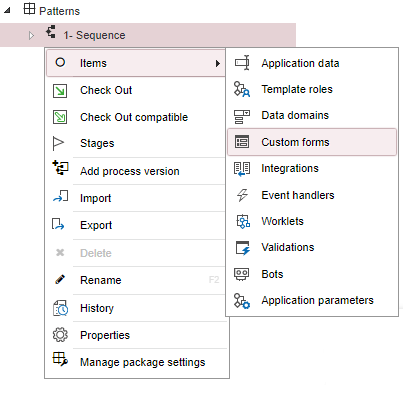
Fig. 1048 Access to custom form list¶

Fig. 1049 Custom form list¶
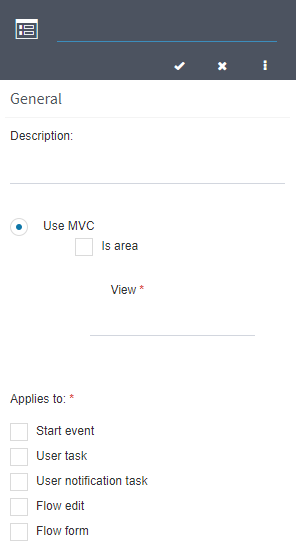
Fig. 1050 Custom form configuration panel¶
Custom form configuration¶
The configuration panel of a custom form is shown in Fig. 1050. In the panel you must indicate the cshtml file that contains the form (if it is a custom view) or the area, controller and action that correspond to it (if the forms were built using a custom area).
To configure a custom form:
Leave the “Use MVC“ option checked. The “Use WebForms“ option will only be displayed when the system parameter option “ShowWebFormsProperties“ has the value “true“ and it will be accessible when expanding the form using the button
 . This option is for forms made for the alternative Qflow site, which is maintained for compatibility with forms made in previous versions and which are different from those described in this manual.
. This option is for forms made for the alternative Qflow site, which is maintained for compatibility with forms made in previous versions and which are different from those described in this manual.Fill the form data.
If the form is a custom view, leave the “Is area“ option unchecked, and enter, in the “View“ field, the name of the view in which the form is located.
If the form belongs to an area, check the option “Is area”. The screen will change to show other properties, which you need to fill out as follows:
Área: escriba el nombre del área. Éste es el nombre que
Area: enter the name of the area. This is the name returned by the AreaName property of the class that registers the area. In the example that appears in the Register the area section of this manual, the name of the area is “SampleCustomForm”.
Controlador: escriba el nombre de la clase que contiene
Controller: Enter the name of the class that contains the controller, but without the “Controller” suffix. For example, if the class is “FlowController“, type “Flow“.
Acción: escriba el nombre de la acción correspondiente al
Action: type the name of the action corresponding to the form. In the example that appears in the Start flow form section of this manual, all the actions of the start form are called “StartTutorial”. Note that even though there are three actions for a start form, they all have the same name and you only need to define one custom form in Qflow Design.
In the “Applies to” section, you must check the types of steps in which you want to use the form. This means that in these steps, when associating the custom form (see the Associate the forms to the corresponding elements section), only those applicable to the step appear.
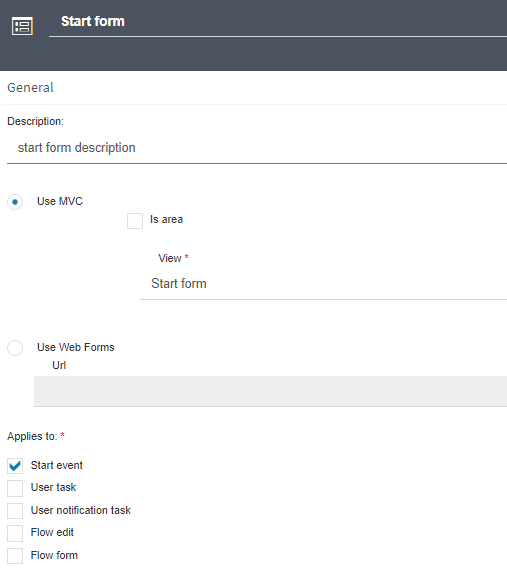
Fig. 1051 Expanded properties of a custom form¶
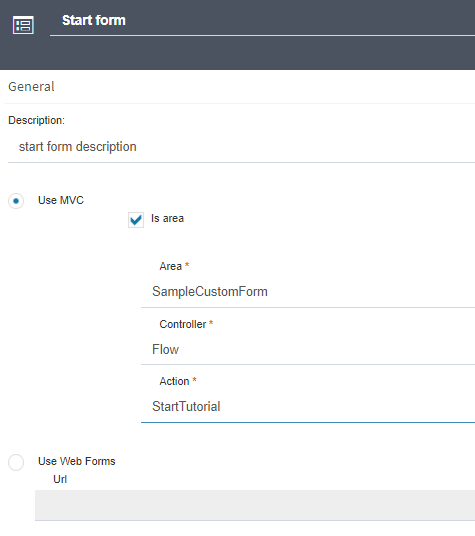
Fig. 1052 Configuring a custom form that is in an area¶
Associate the forms to the corresponding elements¶
Finally, the forms must be associated to the elements to which they correspond. For example, a response form is associated to an interactive step, such as a question or task step. Which element the form is associated to depends on the type of the form:
Start form: it is associated to the version start step.
Flow form: it is associated to the version.
Flow edit form: it is associated to the version.
Response form: it is associated to the corresponding task or question step.
Start and response custom form¶
The custom start form will be associated with the start step of the version in which you want to use it. A response form is associated with the task or question step for which it was designed.
To associate one of these forms:
If the version in which you want to use the form is not checked out, check it out (right-click on the version and from the context menu select “Check Out”).
Double-click on the version in the solution explorer of Qflow Design to open the process design.
Once the design is open, double-click the step to which you want to associate the form. Expand the form and then expand the “Custom form” section.
Select the form you want to associate to the step (Fig. 1053).
Check in the version. Remember that for the form to appear on Qflow Task when starting a process, the version must be the production version and it must have been checked in after making the change.
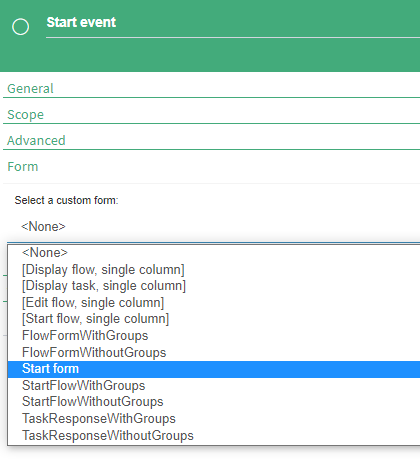
Fig. 1053 Custom form selection¶
Flow form and flow edit form¶
Both the flow form and the flow edit form are associated to a version. To associate one of these forms:
If the version in which you want to use the form is not checked out, check it out (right-click on the version and in the context menu, select “Check Out”).
Right-click on the version in which you want to use the form, and in the context menu select “Flow forms” and the “Flow form” or “Flow edit form” options, depending on which form you wish to associate. Qflow opens a form that allows you to configure its properties, expand the “Custom form” section and then select the form (Fig. 1054).
Select the form and click “Save”.
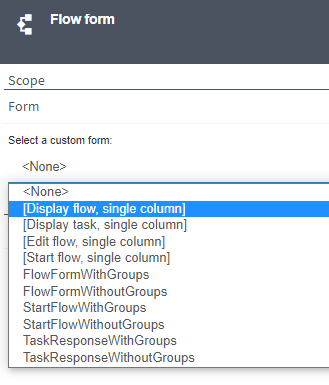
Fig. 1054 Custom form panel¶
Remember to check in the version to be able to view the changes on Qflow Task.
Helpers references¶
Described below are each of the helpers that Qflow makes available to developers to generate the HTML code of various elements that can appear in custom forms.
QAttachmentTable: it allows you to add the table that shows the flow’s attachments to the form.
QAttachmentUpload: it allows you to add file attachment options to the form. Keep in mind that these options will not work correctly if there are no permissions to attach files on the form. A generic form should verify that these permissions are available before adding these controls. The code for this helper must be outside the “form” element, unlike QAttachmentTable, which must be inside.
if (Model.AttachmentsModel.Scope.AddAllowed) { @Html.QAttachmentUpload(Model.AttachmentsModel, new QSimplePanelOptions()) }
QControl: it allows you to add the control that is used to display an application datum and to modify its value (a text box, a drop-down list, etc) to the form. The application data label (the one that tells the user what data it is) is added separately, using the QLabel helper.
@Html.QControl(Model.Data["Client name"]);
QComments: it allows you to see the comments log in the form. In the log you can see the previous comments and add comments according to the scope defined in the FlowCommentsModel parameter.
QCustomValidations: it allows you to add to the form the validations that were defined for the flow in Qflow Design.
QEditFlowButton: it is used in flow edit forms. It allows you to easily add the button that saves the changes made in the form.
QFlowInfo: it allows you to add a section with the flow data to the form.
QGroup: it lets the application data of a specific group be added to the form. If the group name is omitted, it adds the application data that is not in any group.
@Html.QGroup("", new QGroupPanelOptions() { GroupOptions = new QSimplePanelOptions() { StyleClass = "box box-danger", AddParentDiv = true, ParentDivClass = "col-lg-12" } })
QGroups: it allows you to list all the groups available in the form. You can list them in an orderly way or not, depending on the parameters that are indicated. By default the list is ordered.
QLabel: it allows you to add the label of an application datum (or, in case it does not have a label, its name) to the form. It is necessary whenever you want to show the name of the datum. It is used in the same way as QControl.
QLine: it allows you to add a block of lines to the form. Line blocks are displayed as tables and are suitable for small screens.
QPageScrollMenu: it allows you to add a control to the form to navigate between the different sections of the form.

Fig. 1055 The control for navigating between the sections of the form, which can be added using the QPageScrollMenu helper¶
QRespondTaskButton: it is used in response forms. It allows you to easily add the button that responds to the task.
QRole: it works in an analogous way to QControl, but for a role.
QRoles: it allows you to add the available roles to the form. If the scope of a role for that form determines that it is editable, the role is displayed as editable.
QStartFlowButton: it is used in start forms. It allows you to easily add the button that starts the flow.
QTaskInfo: it allows you to add a section with the task data to the form.
QTemplateInfo: it allows you to add a section with the template data to the form.
QValue: it allows you to add a label to the form that shows the value of an application datum (it does not allow you to modify the application datum).
JavaScript library reference¶
Qflow provides a JavaScript library with functions to be used from custom forms. The functions are accessible via the Host object. The Host object allows you to get other objects, such as objects that represent application data, which also expose functions and properties. All functions that have indexes (typically the instance parameter) use 0 as the first position.
Host¶
The Host object exposes the following functions. To access them, type Host.FunctionName (parameters). Note that some functions only make sense in some contexts. For example, getTaskName does not make sense in a start form, because there is no task.
getData(dataName): it returns a Data object, which represents the application datum whose name is dataName.
getLine(lineName): it returns a Line object that represents the block of lines whose name is lineName.
getRole(roleName): it returns a Role object that represents the role whose name is roleName.
getDataSourceItemDescription(key, domainId, parameters, onSuccess, onError): to be used with domains that get their data from external data sources (or from a list; see the Qflow Design manual). It obtains, for the domain with the identifier domainId, the description corresponding to the key key. If the domain receives parameters, these are passed in the parameters parameter. The onSuccess and onError parameters are for specifying functions to invoke on success or failure. The function specified in onSuccess can receive a parameter, which Qflow will fill with the description obtained.
getSecurityMember(memberId, onSuccess, onError): it gets the member (user, work queue, node, etc.) corresponding to the identifier memberId. If it succeeds, it invokes the function specified by onSuccess, passing the obtained member as a parameter. If it fails, it invokes the function specified in onError.
getFlowName: it returns the name of the flow.
getFlowDescription: it returns the description of the flow.
getTemplateName: it returns the name of the template to which the flow belongs.
getTemplateDescription: it returns the description of the template to which the flow belongs.
getTemplateVersionName: it returns the name of the version that was used to start the flow.
getTemplateVersionDescription: it returns the description of the version that was used to start the flow.
getTaskName: it returns the name of the task.
getTaskDescription: it returns the description of the task.
getTaskSubject: it returns the subject of the task.
getTaskResponse: it returns the response to the task.
getTaskProgress: it returns the progress of the task.
setFlowName (value): it assigns value to the flow name (use only in a start form).
setFlowDescription (value): it assigns value to the flow description (use only in a start form).
setTaskResponse (value): it selects the response with value value.
setTaskProgress (value): it assigns value to the task progress.
submit(): it submits the form (it is like clicking the main button of the form).
Data¶
A Data object represents an application datum. Data objects are obtained using the Host.getData function. They expose the following functions:
addInstance(): in multivalued data, it adds a value to the data, without specifying that value. The value must be assigned later by the setValue function.
getInstanceCount(): it returns the number of values that the data has.
getValue(instance): it returns the value that the data has in the position indicated by instance (for example, getValue(0) returns the first value).
removeInstance(instance): it removes the value at the position indicated by instance.
setErrorMessage(itemInstance, msg): it displays the error message specified by the msg parameter for the data at the position indicated by the itemInstance parameter.
setValue (instance, value): it assigns the value value to the position instance of the data. It should be noted that the value is assumed to be of the configured domain data type.
The following properties of Data objects may be useful:
addAllowed: it indicates if the scope defined for the data in the form allows you to add values to the data.
dataId: data identifier.
dataType: it represents the data type.
defaultValue: data default value.
domainId: identifier of the data domain.
group: name of the group to which the data belongs.
isMultivalued: it indicates if the data is multivalued.
lineName: name of the line block.
maxInstances: maximum amount of values that the data can have.
minInstances: minimum amount of values that the data can have.
name: data name.
removeAllowed: it indicates if the scope defined for the data in the form allows you to remove values from the data.
scope: it represents the scope of the data for the form in which it is being used.
tooltip: data tooltip.
Line¶
A Line object represents a block of lines. Line objects are obtained using the Host.getLine function. They expose the following functions:
addInstance(): it adds a row to the block.
getData(dataName): it returns the data whose name is indicated in the dataName parameter. The returned object is of type Data. A block of lines is composed of several pieces of data, one for each column of the block, and all multivalued. Each value of each piece of data represents a cell in the block of lines. For example, to obtain the value in the second row of a block of lines for a certain column, you have to find the second value of the data corresponding to that column (if the column is represented by the “Address” data, you have to search for the second value of the “Address” data).
getInstanceCount(): it returns the number of rows that the block has.
removeInstance(instance): it removes the row at the position indicated by instance.
The following properties of Line objects may be useful:
addAllowed: it indicates if the scope of the block for that form allows you to add rows to the line.
maxLines: maximum number of rows that the line can have.
minLines: minimum number of rows that the line can have.
name: line block name.
removeAllowed: it indicates if the scope of the block for that form allows you to delete rows from the line.
Role¶
A Role object represents a role. Role objects are obtained using the Host.getRole function. They expose the following functions:
addInstance(): it allows you to add a member to the role, without specifying who the member is.
addMember(memberId, onSuccess, onError): it adds the member with identifier memberId to the role. Once the member has been successfully added, Qflow will execute the function indicated in onSuccess (this function can receive an object that represents the selected member as a parameter). If an error occurs, it will invoke the function specified in onError.
getInstanceCount(): it returns the number of members that the role has.
getMemberId(instance): it returns the identifier of the member that is in instance position.
getMemberName(instance): it returns the name of the member at the instance position.
getMemberType (instance): it returns the type of the member (for example, if it is a user, a work queue, etc.) that is in the position indicated by instance.
removeInstance (instance): it removes the member at the instance position from the role.
removeMember(instance): it removes the member at position instance from the role.
setErrorMessage(itemInstance, msg): it displays the error message specified by the msg parameter for the member at the position indicated by the itemInstance parameter.
setMember(value, instance, onSuccess, onError): it assigns the member indicated by value to the instance position of the role. Once the member has been successfully added, Qflow will execute the function indicated in onSuccess (this function can receive an object that represents the selected member as a parameter). If an error occurs, it will invoke the function specified in onError.
The following properties of Role objects may be useful:
addAllowed: it indicates if the scope defined for the role in the form allows you to add members to the data.
id: role identifier.
isMultivalued: it indicates if the role is multivalued.
maxInstances: maximum number of values that the role can have.
minInstances: minimum number of values that the role can have.
name: role name.
removeAllowed: it indicates whether the scope defined for the role in the form allows you to remove members from the role.
